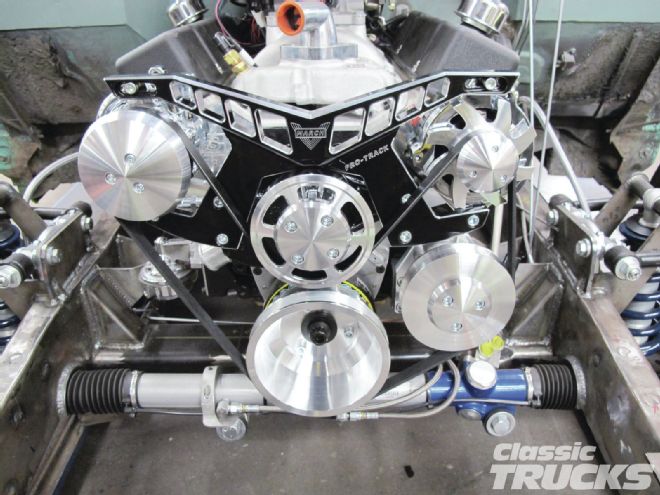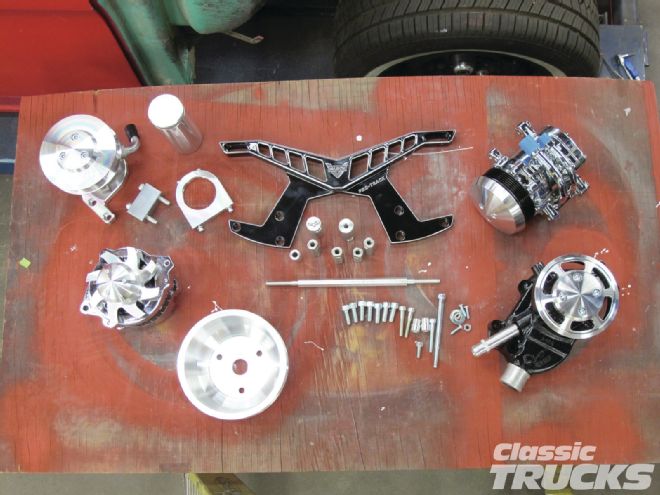
If you’re like me, adjusting something time and time again is quite bothersome and repetitive. I like to install the part and not have to mess with it again until routine maintenance comes around. For hot rodders that means every six to eight months changing fluids, checking brakes or anything that could leave you stranded on the side of the road. But what if you could cut some of the maintenance by installing a serpentine belt pulley system that required less attention and, in my opinion, looks really good?
 March Performance Serpentine Pulley System (Pro-Track 21220-07 with black onyx) looked great in the internet photos and even better when we saw it in person. We were looking for a kit that had an A/C compressor, Gen II PS pump, alternator, and water pump. That way we would not be trying to adapt the March parts to junkyard or aftermarket parts. This was the first time installing a complete March pulley kit and we can say it was easier than we thought it would be.
March Performance Serpentine Pulley System (Pro-Track 21220-07 with black onyx) looked great in the internet photos and even better when we saw it in person. We were looking for a kit that had an A/C compressor, Gen II PS pump, alternator, and water pump. That way we would not be trying to adapt the March parts to junkyard or aftermarket parts. This was the first time installing a complete March pulley kit and we can say it was easier than we thought it would be.
New cars and trucks use what is called a serpentine system that either uses a belt tensioner or some sort of mechanical adjustment to tension the belt. The common serpentine belt is usually a five-rib belt that is matched by a five-rib pulley. The system works well because of the increased surface area on the belt and pulley. The older style V-belt systems usually have several belts to do the same actions under the hood and often require frequent adjustment. Oil and water leaks also cause havoc on V-belts and serp belts, but with the added grip from the serpentine belt, belt noises are greatly reduced. The cool thing about this particular kit, aside from its good looks is that it’s all aluminum and greatly reduces the overall engine weight. CT